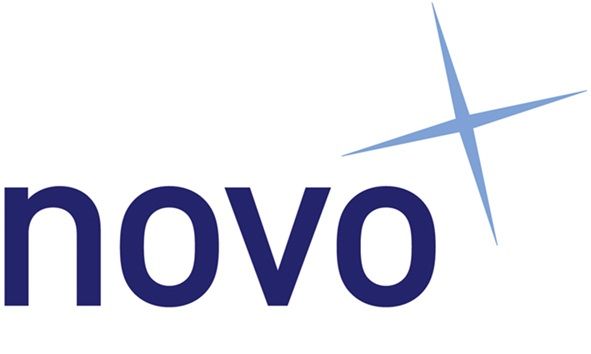Executive Hiring in 2026: The Trends Boards Can’t Afford to Miss

As we approach 2026, organisations seek capable leaders who can thrive in uncertain, fast-moving, and often contradictory conditions.
Executive hiring has always reflected the pressures of its time. In some decades, the emphasis has been on technical expertise, in others, it has been international experience or financial discipline. Today, the war for talent remains fierce, and the picture is more complicated. A board may want bold digital transformation and, in the same breath, reassurance that risk will be contained. Investors want high returns, but still demand social responsibility and sustainability.
For those responsible for appointing senior leaders, this means a shift in priorities. The challenge is not only to identify who can lead but to understand how they will do so, and how resilient they will be when the context inevitably changes.
The hiring process is becoming more complex, expectations of leaders are broader, and retention is now part of the definition of success. Below we explore the major hiring trends likely to shape in 2026.
Emotional Intelligence as a Critical Leadership Asset
Technical skill and strategic vision are essential, but in 2026, boards will be placing far greater emphasis on how leaders connect with others. Emotional intelligence, or the ability to recognise and manage one’s emotions while understanding and responding effectively to others, is becoming a decisive factor in senior hiring.
The reasons are clear. Organisations are facing environments of constant change, and leaders who cannot inspire trust, manage tension, or create psychological safety risk losing their teams at the very moments when stability is needed most. A CEO with exceptional financial acumen but poor self-awareness may quickly undermine confidence in the boardroom.
By contrast, a leader who demonstrates empathy, curiosity, and an ability to listen often unlocks stronger collaboration and innovation.
Expanding the Definition of Leadership
The bar for leadership continues to rise. A decade ago, boards focused narrowly on track record, like achieved cost savings, revenue growth delivered, or market share expanded. Those remain important, but they no longer tell the whole story. A Harvard Business study on global leadership shows that it’s time to widen skills, adopt new technologies and become innovative to stay competitive.
Now there is much more emphasis on how leaders achieve results. In 2026, leaders will be expected to weave environmental and social responsibility into strategy at every level. Digital fluency is following the same path. Once confined to specialist roles, it’s now expected of everyone at the top table.
Assessing these qualities requires different methods. Boards are increasingly commissioning leadership simulations, drawing on 360-degree referencing, and using behavioural interviewing techniques to explore not only what leaders have done but how they have approached it.
Balancing Global Reach with Local Knowledge
Local knowledge remains critical, but senior leadership is becoming more global. For example, when Walmart entered Germany in the 1990s, its leaders brought strong international expertise but failed to grasp local retail culture, regulations, and consumer expectations. The venture ended in costly withdrawal.
The lesson isn’t to avoid global hires, but to ensure the right balance of international experience and local grounding. Search strategies in 2026 must bridge both. Firms that succeed will have strong international networks and deep local insight, presenting candidates who bring fresh ideas while adapting to cultural nuance.
Retention as the Real Test
A successful appointment is no longer defined by the announcement of a new leader. The real test comes one or two years later. Has the executive stayed? Have they delivered what was promised? Has the organisation become stronger under their watch?
Early departures are expensive. McKinsey estimates the cost of a failed C-suite hire can exceed five times the executive’s salary when factoring in disruption, lost momentum, and replacement costs.
Boards are responding by investing in structured onboarding, pairing new leaders with coaches, and organising facilitated sessions with executive teams. These practices, once optional, are fast becoming standard. They help leaders establish credibility quickly, clarify expectations, and build stronger relationships.
Diversity and Inclusion at the Core
The business case for diversity has been made, and boards are now under pressure to show results. In 2026, organisations will not only be judged on the demographics of their leadership but also on the inclusivity of their pipelines and decision-making.
The definition of diversity has expanded. At the centre is gender and ethnicity, but attention is now turning to socio-economic background, neurodiversity, and lived experience. There is also a sharper focus on inclusive behaviours. Boards ask: Does this leader create an environment where people can contribute and develop?
Progress is uneven. In the UK, the FTSE Women Leaders Review shows women now hold over 40% of board roles, yet representation in executive chair and CEO positions remains limited. The challenge for 2026 is to deepen diversity at the very top and ensure inclusion goes beyond optics.
Search firms are playing a key role, ensuring accountability in candidate lists and reframing roles to attract broader talent. Subtle changes in job descriptions or interview panel composition can significantly impact the applicant pool.
Varied Career Paths Gaining Ground
The conventional “ladder to the top” is giving way to varied and non-linear career journeys. Boards are increasingly open to leaders who have moved between industries, built entrepreneurial ventures, or pursued portfolio careers.
A striking example is Mary Barra, CEO of General Motors, who rose through diverse roles in engineering, HR, and product development before leading one of the world’s largest automakers into an electric future. Her journey reflects adaptability, not a rigid path.
The implication for hiring is that boards must weigh potential alongside track record. Assessment criteria are expanding to include creativity, resilience, and learning agility. In 2026, standout leaders may not have the longest tenures or neatest CVs, but they will bring perspectives that help organisations thrive amid change.
Purpose and ESG in Practice
The pressure on boards to appoint leaders who can balance profitability with wider responsibility is only intensifying. Investors, regulators, and employees are all demanding more.
Appointing a Chief Sustainability Officer is no longer sufficient. Stakeholders expect purpose to be integrated into decision-making across the executive team. Companies like Patagonia have built their brand on embedding purpose into every decision, while others, such as oil and gas majors slow to adapt, face rising scrutiny from both regulators and activist investors.
Boards will need to ask whether candidates can demonstrate a proven record of integrating ESG into business strategy. Search partners play a key role in moving past polished statements to uncover evidence of real outcomes, from carbon reduction to governance reform.
Candidate Experience as a Differentiator
Senior executives are more selective than ever about opportunities they pursue. The way organisations approach them during the search process can be decisive.
A poorly managed candidate experience, impersonal contact, lack of discretion, or unclear communication, can deter top leaders and damage corporate reputation. Conversely, a transparent, respectful process builds goodwill, even with those not ultimately appointed.
Search firms act as ambassadors, and every interaction reflects on the client’s brand. In 2026, organisations that treat candidate experience as a core part of their value proposition will be better positioned to secure top talent.
Interim and Fractional Roles
One of the clearest shifts of recent years has been the rise of interim and fractional leadership. Organisations undergoing transformation, managing crises, or preparing for expansion often benefit from leaders who deliver targeted expertise for a defined period.
This was evident during the COVID-19 pandemic, when many businesses turned to interim CFOs and COOs to stabilise operations. The model proved its value and has since become a mainstream option.
For executives, the appeal lies in variety and impact. For boards, it lies in flexibility and speed. Success in this model requires different evaluation criteria: the ability to mobilise quickly, deliver impact fast, and exit cleanly.
Technology Becomes a Partner in Search
One of the most visible changes is the rise of digital tools in executive search. Candidate mapping platforms can scan global markets in hours, while predictive analytics flag leaders likely to succeed in specific contexts.
For example, a European fintech scaling into Asia used AI-enabled talent mapping to uncover candidates outside traditional networks. One of these “hidden” candidates was appointed and went on to deliver rapid regional growth.
The power of these tools is undeniable. But no experienced board member would entrust the final word to an algorithm. Cultural chemistry, values alignment, and interpersonal judgement remain human domains. In 2026, the best firms will use digital tools as amplifiers, not replacements.
Conclusion
Several forces will shape executive hiring in 2026: the rise of technology, expanding leadership expectations, the pressure for diversity and purpose, and the growing importance of retention. Global reach will remain vital, but it must be matched with local nuance. Interim and fractional roles will continue to grow, while varied career paths will be valued as strengths rather than risks.
What ties all these trends together is the need for balance. Data must be matched with judgement, global perspective with local insight, and ambition with sustainability. Appointing senior leaders is no longer just a transaction, it is a strategic investment that defines culture, reputation, and long-term success.
Novo Executive Search is committed to helping boards and leadership teams navigate this evolving landscape. Through research-led mapping, discreet approaches, and a consultative style, Novo ensures clients secure leaders who are not only capable but equipped to thrive. In a market of rising expectations, Novo provides organisations with the clarity and confidence to make decisive leadership choices.












